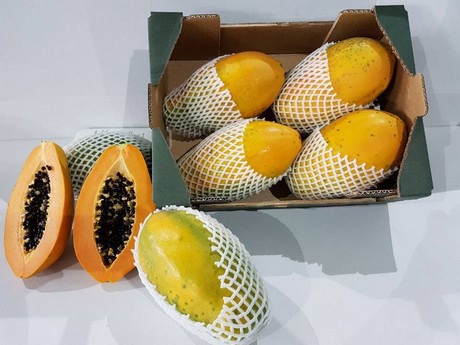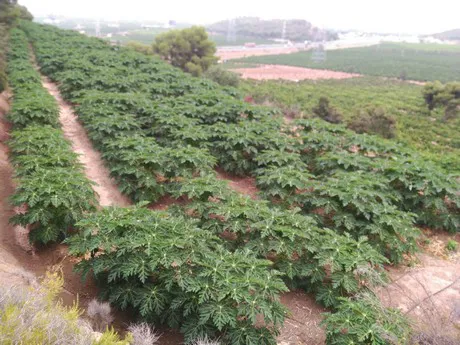Normally, the European market has papayas from Latin America or Africa, although Spanish companies such as Sonbío, specialists in the marketing of organic fruit and vegetables, prefer Canary papayas.
"The fruits from Latin America or Africa tend to be cut too soon so that they can endure their long journey to Europe in a container. There are also air shipments, but the cost of the product is greatly increased, which is why we have found the ideal origin for organic papayas in the Canary Islands, despite the logistical challenges," explains David Porras, of the management and sales department of Sonbío.

According to the trader, the Canary papaya is left to ripen in the plant for longer than the overseas papayas shipped by sea, and is cut with the necessary time for transport and sale. "The volcanic soil and the climate of the Canary Islands generally make the tropical fruits very tasty, as already shown by our organic avocados, mangoes and passion fruit. Papayas are also produced in the south of the Peninsula, in areas like Malaga or Almeria, although the fruit there doesn't have the flavor and sweetness of Canary papayas. This fruit is very sensitive to temperature changes and needs a purely tropical climate."
At the moment, according to David Porras, papaya sales are a bit slow in general, depending on the size and market. "As an organic producer, we do not have 'a la carte sizes'. In Germany, for example, they look for papayas with small sizes, for individual consumption, while in France, they prefer large papayas to sell them in halves. The sale of organic products has ground to a halt, something that usually happens at this time of the year."
"It is true that, in recent years, there has been increasing pressure on the prices of organic products, which are often sold at prices of conventional products. In the past, supermarkets took into account the added value of organic farming, and sought that extra quality. Now prices are being imposed over quality, and this does not make any sense in the organic segment. The large discount distribution chains are paving the way in that sense," he says.

Sonbío sells its organic papayas mainly to Dutch, French and German distributors. "The large Spanish retailers are currently not interested in papayas, but the fruit has a niche in central and northern Europe. A few years ago, there was a kind of 'boom' in the consumption of papayas because of its taste, its beneficial properties and its versatility. Its market share grew a lot because of the novelty, although it is easy to grow quickly when you are starting from scratch, because its consumption is still really low compared to other tropical fruits, such as mangoes or avocados," says David Porras.
Due to the climate of the Canary Islands, Sonbío is able to distribute papayas all year round, with the exception of the summer months. "The papayas that flower during the colder winter months do not have the same quality as those whose flowering took place in the summer months. For this reason, we usually stop selling papayas in July and resume their marketing in October."
For more information:
Sonia López
David Porras
Sonbio Export & Import S.L.
Ctra.Madrid km 4
MERCALICANTE
Pabellón Polivalente
Modulo 311-313-315
03006 Alicante - España
Tel: +34 965772186
Mpbile:+34 602248880
Email: administracion@sonbio.com (Sonia)
Email: direccion@sonbio.com (David)
www.sonbio.com
